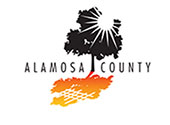Alamosa County Colorado Addiction Treatment Hotline
Alamosa County Colorado Substance Abuse Treatment Hotline
Substance Abuse Statistics Alamosa County Colorado
The prevalence of substance abuse in Alamosa County, Colorado, has had a profound impact on the community, particularly evident in the number of children placed in foster care due to substance abuse issues within families[1]. Between 2020 and 2021, the employment rate in Alamosa County increased by 2.48%, indicating potential economic growth in the area[2]. However, alongside this growth, there has been a concerning rise in drug overdose deaths in the county, with a rate of 16.1 drug overdose deaths per 100,000 residents—an 83% increase from the rate in 2001[3]. This alarming statistic underscores the pressing need for addressing substance abuse issues within the county to prevent further harm to its residents and families.
In Alamosa County, commonly abused substances include opioids, with nearly 21,000 opioid prescriptions dispensed in 2015 alone, surpassing the county’s population of over 16,600[4]. Additionally, MDMA, a psychoactive drug commonly known as ecstasy, is increasingly available and abused in Colorado, particularly in urban areas like Denver[5]. As the opioid crisis continues to persist in the San Luis Valley region, efforts are being made to address substance abuse issues at both local and state levels, emphasizing the need for comprehensive strategies to tackle this pressing public health concern[1].
The impact of substance abuse on the community extends beyond individual health consequences to broader societal implications. Substance abuse contributes to mental health challenges, chronic illnesses, and overall community well-being[6]. Reports on controlled substances in Colorado shed light on the misuse, addiction, treatment admissions, and deaths related to substance abuse, highlighting the multifaceted nature of the issue[7]. Efforts to address substance abuse in Alamosa County and beyond must encompass prevention, intervention, and treatment strategies to mitigate the adverse effects of substance abuse on individuals, families, and the community as a whole[4]. By understanding the prevalence of substance abuse, the commonly abused substances in the area, and the community impacts, stakeholders can work towards developing targeted interventions and support systems to address this complex issue effectively.
References
1. A Rural Crisis: The Opioid Epidemic in the San Luis Valley. from coloradohealth.org
2. Alamosa County, CO. from datausa.io/profile/geo/alamosa-county-co
3. Drug Overdoses Deaths in Colorado Increase. from www.coloradohealthinstitute.org/research/death-drugs
4. Want To Know Where The Opioid Epidemic Hit Colorado …. from www.cpr.org
5. Other Dangerous Drugs – Colorado Drug Threat Assessment. from www.justice.gov/archive/ndic/pubs4/4300/odd.htm
6. Three areas identified as significant issues, needs in SLV …. from www.alamosanews.com
7. Prescription Drug Data Profiles. from cdphe.colorado.gov

Alamosa County, CO Substance Abuse Treatment Resources

Alamosa County Colorado Government Substance Abuse Prevention
Alamosa County Colorado Government Substance Abuse Prevention. In Alamosa County, Colorado, the government’s substance abuse prevention efforts are for safeguarding the community’s health and well-being. Through proactive initiatives and collaborative partnerships, Alamosa County implements comprehensive strategies to educate, support, and empower residents in the prevention of substance abuse. These efforts encompass a range of programs, including public awareness campaigns, community outreach, and access to resources for treatment and support. By prioritizing prevention and intervention, Alamosa County’s government plays a crucial role in fostering a safer and healthier environment for all its residents, ensuring that individuals have the tools and support they need to make informed decisions and lead fulfilling lives free from the harms of substance abuse.

Hope in the Valley Alamosa County Colorado Detox and Outpatient IOP
Hope in the Valley Alamosa County Colorado Detox and Outpatient IOP. ASAM Level 3.2 Detox, known as Clinically Managed Residential Withdrawal, is tailored for individuals facing moderate withdrawal risks that warrant round-the-clock assistance. This rehabilitation approach offers numerous benefits. Detoxing from substances like alcohol without supervision can pose serious, potentially life threatening dangers. At Hope in the Valley, our outpatient programs are expertly facilitated by CAST Alamosa, ensuring a smooth transition to sober living and minimizing the risk of relapse. Our comprehensive outpatient services include Intensive Outpatient Treatment (IOP), continuing care, family treatment, individual therapy, and recovery support.

Alamosa County CO Alcoholics Anonymous Southern Colorado
Alamosa County CO Alcoholics Anonymous Southern Colorado. The Central Service Office of Southern Colorado (CSO) is a service branch of Alcoholics Anonymous including Districts 8,6,& 3. In Alamosa County, Colorado, Alcoholics Anonymous (AA) finds a steadfast presence through the Central Service Office of Southern Colorado. This office serves as a vital link between AA groups and individuals seeking support for alcohol addiction in the region. By coordinating meetings, providing resources, and fostering a sense of community, the Central Service Office offers essential assistance to those on the path to recovery. Through its dedication to anonymity, unity, and recovery, AA in Alamosa County CO thrives under the guidance of the Central Service Office, providing hope and healing to individuals and families affected by alcoholism.

Alamosa County Colorado Rural Addiction Recovery Network
Alamosa County Colorado Rural Addiction Recovery Network. The Rural Recovery Network (RRN) is a state-funded program for Medication Assisted Treatment (MAT) and opioid addiction recovery. Its mission is to help those struggling with opioid addiction in the San Luis Valley (Alamosa, Conejos, Costilla, Rio Grande, Mineral, Saguache, and Custer counties) and Arkansas Valley (Fremont and Otero counties). The program is comprised of healthcare providers and community organizations that will work together to support you on your journey.

